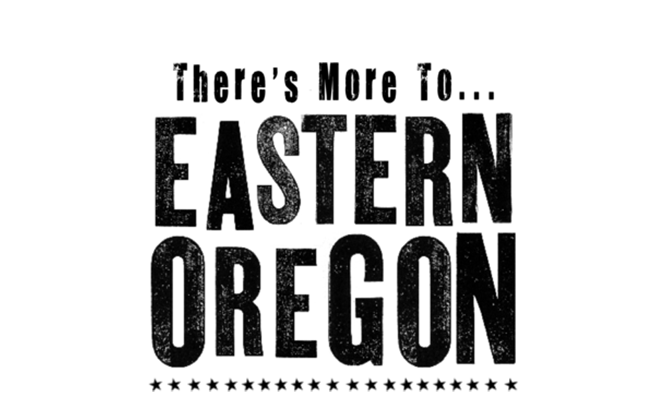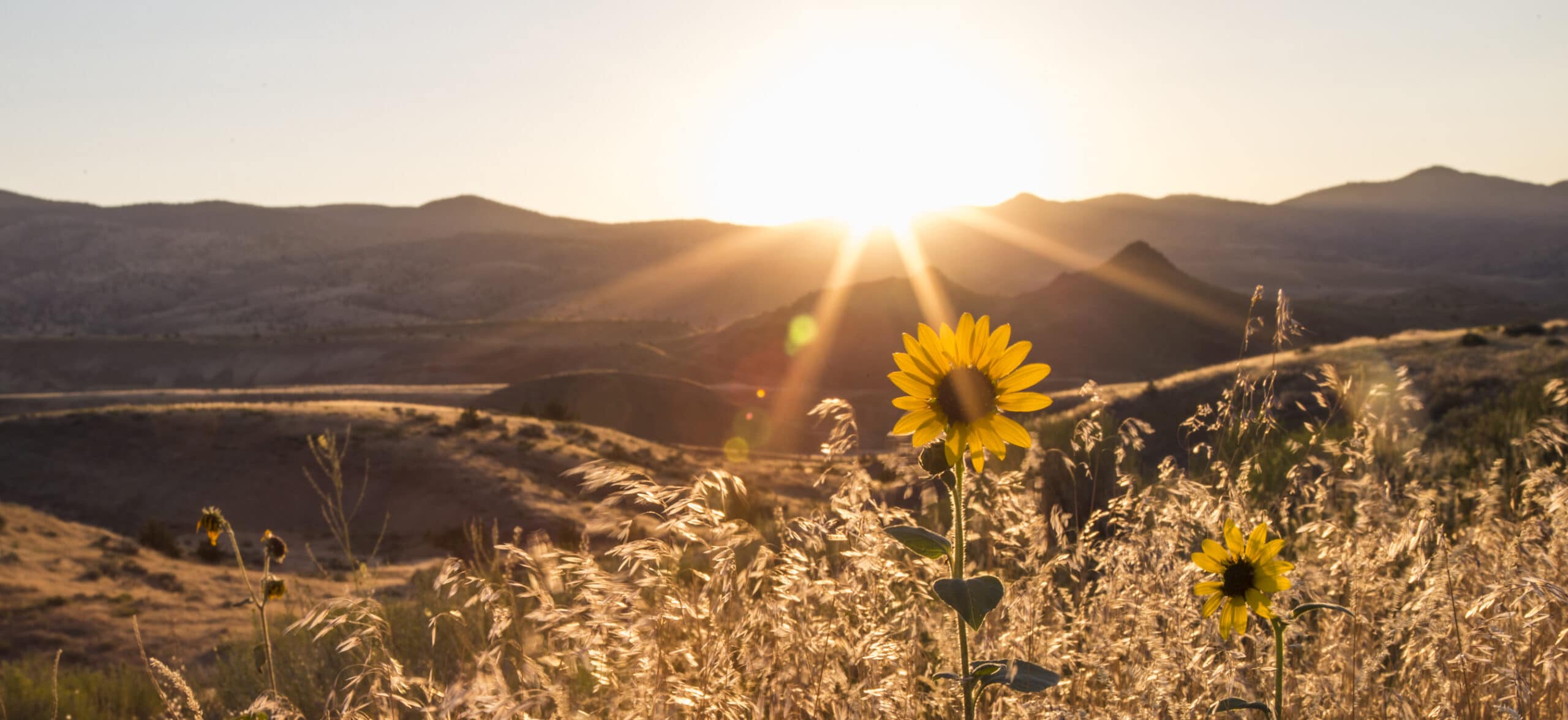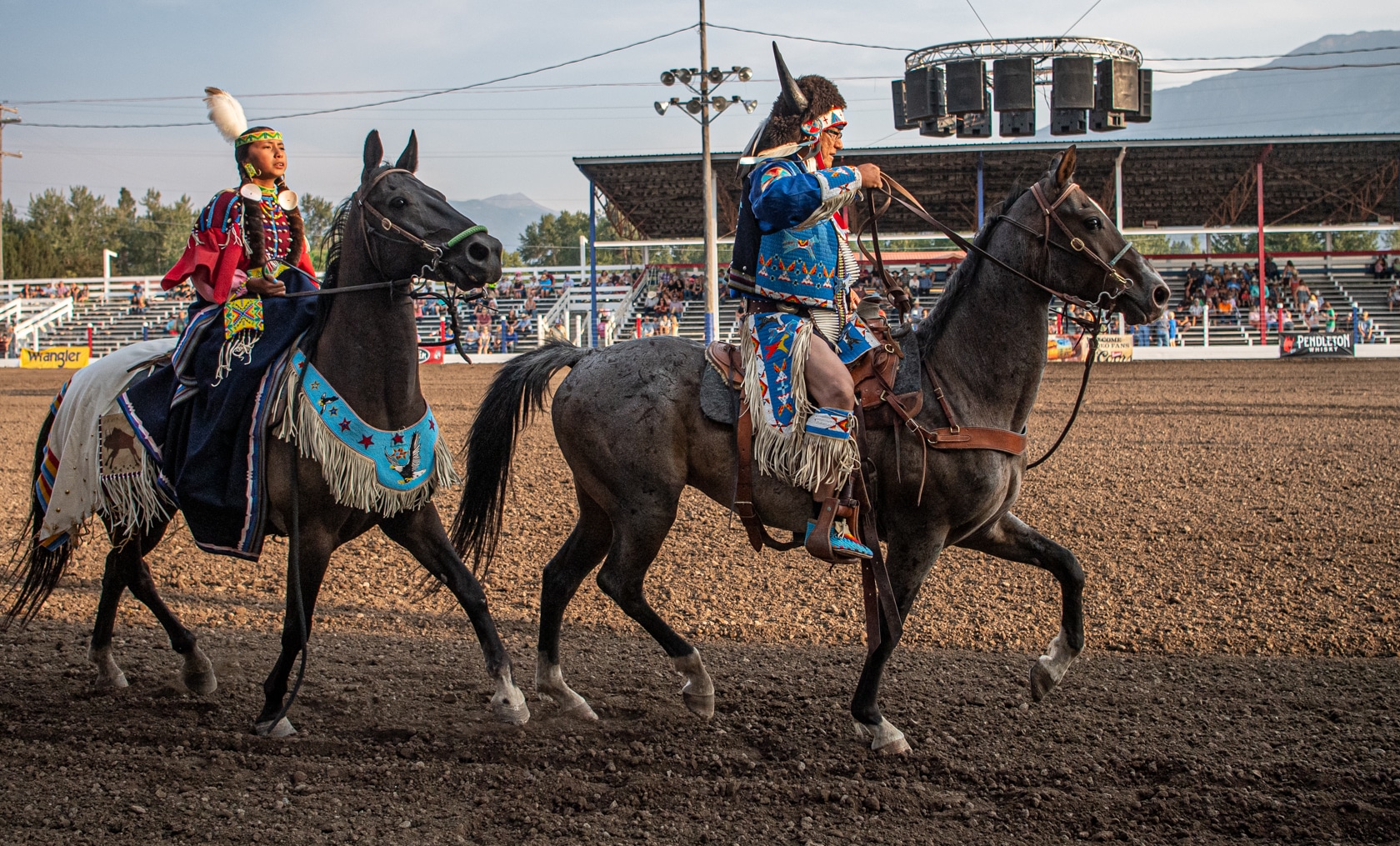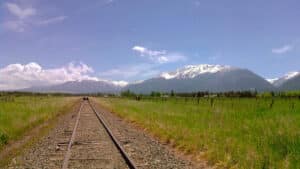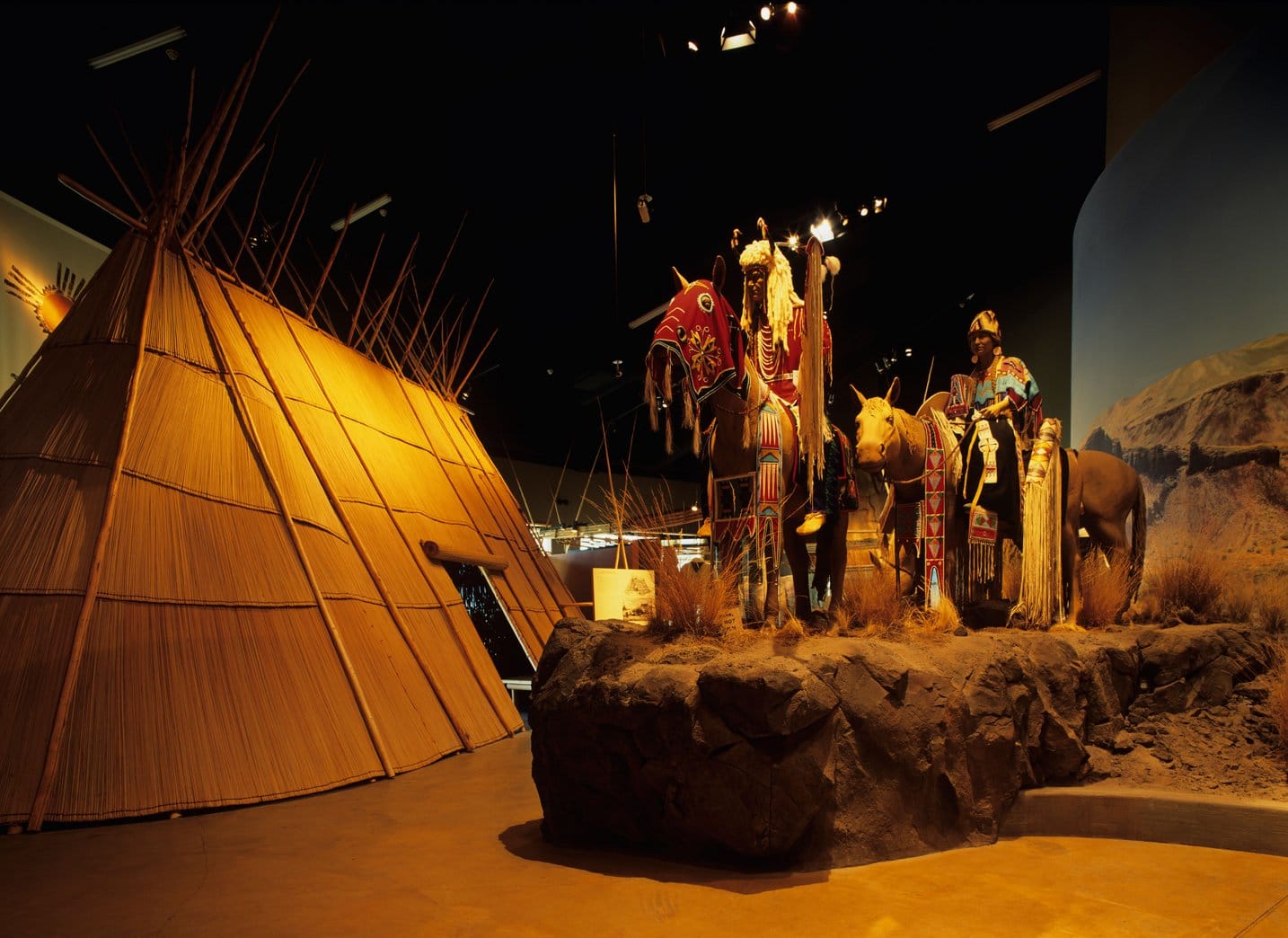Collage of Cultures
To tell the tale of Eastern Oregon’s rich and diverse culture, one only has to look to the people who have left – and in many ways continue to leave – their indelible impression on the vast and varied landscape. Among them, well-established Native Americans, early explorers including Lewis & Clark, French-Canadian fur trappers and traders, Oregon Trail pioneers, hardened cowboys, and a community of immigrant Basques have all helped shape a broad cultural tapestry that permeates the region. And while many of these individuals have long since passed, their impacts live on and are preserved for future generations to discover through the unique culture, history, and heritage-based experiences awaiting visitors to Eastern Oregon. Ride along through Northeast Oregon as we take you on a journey to discover some of the unique ways that their influence lives on today.
Northeast Oregon’s landscape is as diverse as the cultures that shape it. High peaks and deep canyons, mixed with lush farmlands and rocky sage-covered hills, set the stage for travelers seeking a meaningful experience. From farm trails full of local flavor to outdoor recreation to cultural immersion, the landscapes set the tone as discovery unfolds on the explorer’s journey.
Wallowa County
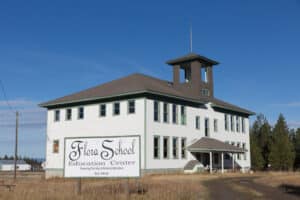
Photo by Joni Kabana
You’ll find a variety of immersive and educational experiences as you meander a north/south route through Northeast Oregon. Comprised of Wallowa, Union, and Baker Counties, the journey begins in Wallowa County, about 30 minutes north of Enterprise, at the Flora School Education Center. Dating back more than a century to 1915, the Center now teaches and demonstrates the lost arts and skills of generations past through a variety of classes and activities such as blacksmithing, wool dyeing, dutch oven cooking, spinning, weaving, and sewing. After a day exploring the Flora School, adventurers seeking the settler experience can make their overnight home on the range at the nearby RimRock Inn, a historic landmark in Wallowa County. The Inn sits on the edge of Joseph Creek Canyon which, like many cultural and historical sites in the region, is named after the famous Nez Perce leader Chief Joseph. A hiking path nearby provides a gentle trek to the ridge of a canyon overlooking Zumwalt Prairie and the Wallowa Mountains, which are aptly referred to as the “Swiss Alps of Oregon.”
The following morning, head south to the town of Joseph for lunch, enjoy a stroll through the historical art-centric city and check out the Prairie Mountain Folk School. A center for traditional crafts, the school provides students with an immersive learning experience in heritage trades ranging from canning, pie making, and preserving, to hat making, blacksmithing, and Japanese timber frame construction. Alternatively, enjoy a mid-day excursion to experience the history of the railroads with the Joseph Branch Railriders, where you’ll take in the spectacular scenery and fresh mountain air as you enjoy a pedal-powered ride along historical railways at the base of the Wallowas.

Photo by Joni Kabana
Post rail ride, make your way a few minutes down the road to the Maxville Heritage Interpretive Center, which celebrates, questions, and explores the history of the multicultural timber town. At its peak between 1924 and 1933, Maxville was home to 400 residents and was the largest city in Wallowa County. Like many timber towns in the Pacific Northwest, Maxville was home to both white and African American loggers, despite Oregon’s exclusion laws in the early 1920s. History buffs and ghost hunters can explore the remnants of the cities, railroads, foundations, and artifacts when exploring the area. End the day with a stay at The Jennings Hotel, a landmark in Joseph since 1910; the building has evolved over decades to serve the changing needs of rural Wallowa County. Most recently, The Jennings has transformed from a run-down apartment building into a crowd-funded boutique hotel and outpost for artists.
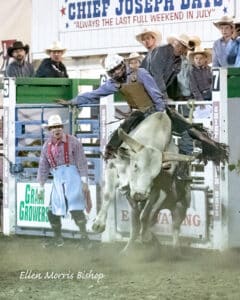
Photo by Ellen Bishop
Pro Tip! Every July, Chief Joseph Days, founded in 1946, attracts folks around the country for five incredible days of rodeo and a taste of the American West.
Bonus Points! For the modern-day adventurer seeking to engage with native lands and waterways, Winding Waters River Expeditions offers multi-day river experiences. The adventures wind through neighboring Hells Canyon and Grand Ronde and include a front-row seat to petroglyphs and pictographs from early Indigenous settlements. Guests enjoy dinner foraged by a river guide who may just double as the chef, and the opportunity to experience how the native inhabitants might have fished, floated, and foraged atop the running waters deep below canyon walls.
When the sun rises, explore the shores of Wallowa Lake and the sacred burial site dedicated to tıwi·teqıs, Old Chief Joseph, a revered Nez Perce leader who refused to leave the ancestral lands of the Wallowa Nez Perce and move to a reservation in Idaho. Originally buried between the forks of the Wallowa and Lostine rivers, his remains were relocated to the site in 1926. While visiting the burial site, please help protect and respect the gravesite by following the requests and recommendations on the website.
After exploring the ceremonial burial site and Wallowa Lake’s surrounding areas, head out of town on a northwest bearing. Before the vast Wallowa Valley was settled with farms and ranches, the region of Northeastern Oregon’s remote Wallowa County was home to the Wallowa Band of the Niimíipuu (Nez Perce) American Indians. Today, the Niimíipuu have a presence again in the Wallowa area, though their nation’s jurisdiction remains within the bounds of the reservation in Idaho. Wallowa Band Nez Perce Trail Visitor Center, organized by the county’s residents and the descendants of the Niimíipuu from Oregon, Washington, and Idaho, is located just 30 minutes northwest of Joseph. Curious minds can explore photos, artifacts, maps, and art, and the annual Tamkaliks Celebration invites residents and visitors alike to join the people and descendants of the Wallowa Band of the Niimíipuu American Indians. The immersive experience celebrates the Niimíipuu culture with traditional drum beats, songs, language, and prayers.
Union County
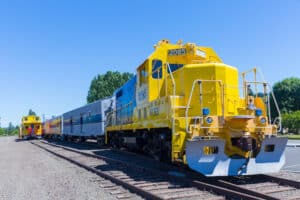
Eagle Cap Excursion Train Depot in Elgin, Oregon Photo by Joni Kabana
Next up, explore Union County and the Eagle Cap wilderness on the Eagle Cap Excursion Train, which follows the 63-mile long Wallowa Union Railroad, aka Joseph Branch, connecting Elgin in Union County with Joseph in Wallowa County. A descendent of the 1869-1893 Pacific Northwest great railway age, the Joseph Branch enjoys a rich heritage as an extension of the original Oregon Railway & Navigation Company (OR & N). After the train ride, grab lunch in La Grande and head to the Lodge at Hot Lake for a soak in the natural hot springs. The healing waters rest at the foot of a large bluff and are said to hold medicinal powers. Used by Nez Perce Native Americans and named Ea-Kesh-Pa (Valley of Peace), the hot springs later became a popular stop for weary travelers on the Oregon Trail. The recently renovated 1906 hotel was once called the “Mayo Clinic of the West.”
After a rejuvenating soak, head south to the town of Union, where you’ll explore the charming downtown, a collection of Victorian homes, and brick buildings that make up Union’s Main Street Historic District, which is on the National Register of Historic Places. Don’t miss the Union County Museum, before finishing the day off with a stay in one of 15 themed rooms at the Historic Union Hotel.
Baker County
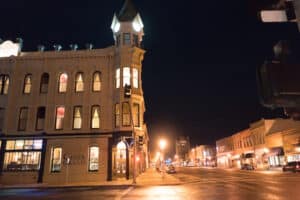
Geiser Grand Hotel Photo by Joni Kabana
Finish your adventure in Baker County for the final stretch, where a lineup of historical markers and museums will take you on a journey through time, including the Eastern Oregon Museum, Baker Heritage Museum, Crossroads Carnegie Art, Adler House Museum, and the Baker Black Locust Tree. GO Wild Baker City Tours offers a self-guided immersive experience from the comfort of your very own mobile phone.
If you plan ahead, be sure to add the Sumpter Valley Railroad to your travel itinerary. History comes to life aboard the vintage trains as passengers travel through the heart of the gold country in the scenic Sumpter Valley, which runs between McEwen and the historic mining town of Sumpter.
End the multi-day journey with a stay at the famous Geiser Grand Hotel. For those who appreciate landmark preservation and timeless luxury, nothing compares. Guests can explore the architectural jewel and experience the spectacular restoration that received the National Trust for Historic Preservation’s coveted Honor Award for Excellence in Historic Preservation.
Pro Tip! Don’t rush history; meander along the suggested trail, and take time to enjoy the stops and scenery that interest you.
We think you’ll soon see the culture, heritage, and history of the people – past and present – make way for greater awareness and appreciation of the lands whose stories they tell. And we’re confident you will agree that the cultural influence, heritage, and history waiting to be found in Eastern Oregon are as expansive as its sweeping views, beginning with the remote wild of Northeast Oregon.
